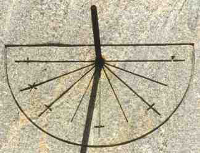|
Why Is It That a Day Has 24 Hours? Like many things, the concept of a 24-hour day goes back to ancient times, specifically to the people of Ancient Egypt. They divided the day (when the Sun shone) into 10 hours and the night (when the Sun didn't shine) into 12 hours, with an hour at twilight and an hour at the end of the day. That made the total 24 (although they didn't use the word hour). The Egyptians arrived at 12 hours of nighttime by tracking the movement of stars in the sky, by focusing on specific star groups. These star groups were called decans and rose consecutively as the days went by. During a period of complete darkness in summer, the Egyptians could see 12 decans. 
Tracking daylight hours was a bit easier because the Sun was shining. Egyptians used a shadow clock to track the sunlight and came up with the equivalent of 10 decans. They added one at the beginning of the day and one at the end, and the total was 24. It wasn't an exact science. Days were longer in summer and shorter in winter, and hours had different lengths as well. Nonetheless, the Egyptians by 1500 B.C. had sundials divided into 12 equal parts to signify daytime and nighttime hours. It was the Greek astronomer Hipparchus who came up with an exact measurement for this division of 24, which he called an hōra, from which we derived the English word hour. As well, the Egyptians came up with a number of days in a year by taking the number of decans visible in daylight (10) and multiplying that by the total number of decans (36). Again, it wasn't an exact science because that total was 360. The Egyptians added five days on to the end of the year, and this is how the total number of days came to be 365. (It was the Egyptians as well who originally came up with the idea of a 12-month year, although it took the Romans to solidify that idea. Note: Decan is still used as a term today, in astrology.Have a suggestion for this feature? Email Dave. |
Social Studies for Kids |





